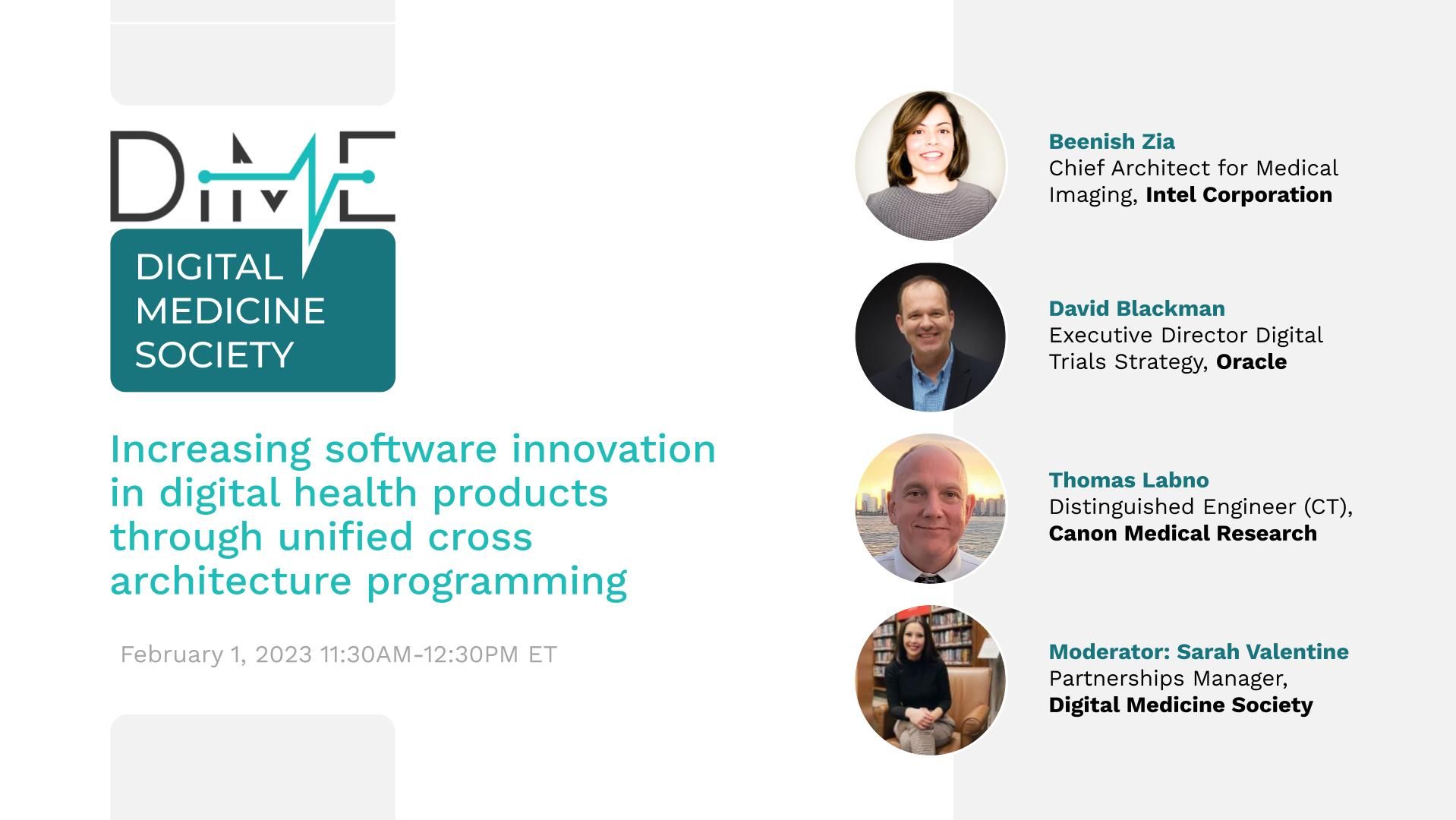
Increasing software innovation in digital health products through unified cross architecture programming
Date/Time
February 1, 2023
Panelists
Beenish Zia
Chief Architect for Medical Imaging, Intel Corporation
Moderator
Sarah Valentine
Partnerships Manager, DiMe
Discussion Topic
Digital health innovation has grown exponentially in recent years. Teams developing digital health products and technologies have developed their products using unique, multi-faceted programming modalities to support an evolving set of features to meet the diverse needs of user populations. While this has enabled products to be fit-for-purpose, this has also resulted in disparate products that exacerbate the challenges of interoperability, making retrofit and digital transformation more challenging.
Leveraging heterogeneous computing with unified cross architecture programming allows digital health products to utilize open source industry specifications that allow software application development to be hardware agnostic, which in turn enables product developers and healthcare systems using those products to deploy innovative solutions off-the-shelf on their existing heterogeneous infrastructure. As a result, the barrier to entry for many often overlooked consumers is reduced, ensuring that no matter where it’s implemented, an innovative product can remain patient-centric.
Watch as we discuss how digital health product teams can deliver groundbreaking solutions that are both innovative and equitable. Thought leaders at Intel, Canon Medical, and Oracle discuss how they’ve implemented a unified cross programming model for heterogeneous computing to increase software innovation and expand market access to digital health technologies to deliver patient-centric care solutions to those in need.



